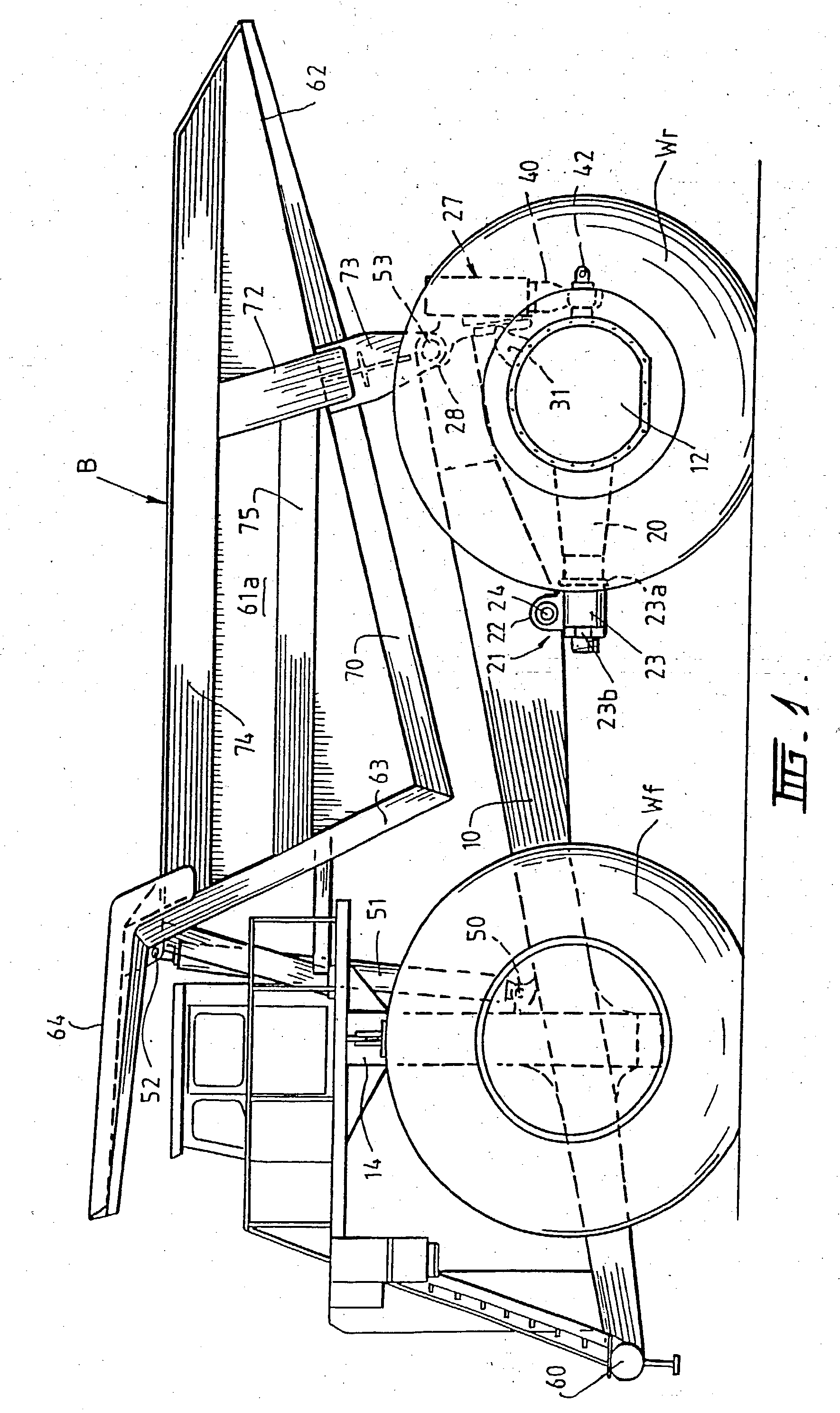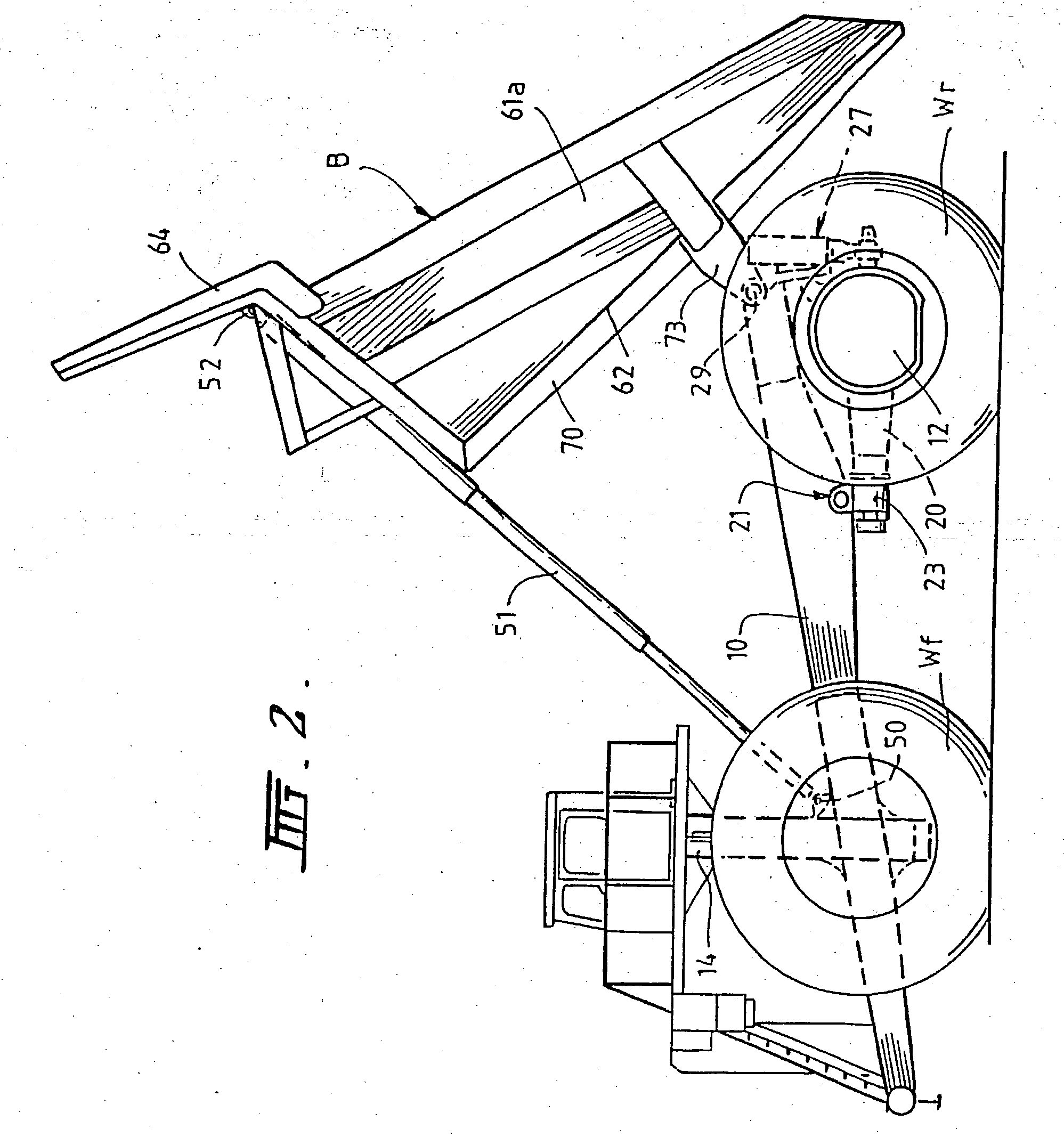Suspension system and body for large dump trucks
a suspension system and dump truck technology, applied in the direction of propulsion parts, transportation and packaging, electric propulsion mounting, etc., can solve the problems of large cost of operating such trucks, narrow main frame of trucks, and very high bending loads on the rear axle and rear wheel support systems, so as to facilitate the discharge of loads and minimize the wear on the side of the body. , the effect of increasing the floor area
- Summary
- Abstract
- Description
- Claims
- Application Information
AI Technical Summary
Benefits of technology
Problems solved by technology
Method used
Image
Examples
Embodiment Construction
[0038] Referring to FIGS. 1 to 5 of the drawings, the truck frame comprises a pair of relatively light longitudinal members 10 and 11 suspending rear wheel mounting hubs 12 and 13 towards their rear ends. The longitudinal members 10 and 11 are connected at their forward ends by a substantial cross member 14, such as a mounting collar which generally includes mounting points for the front suspension (not shown) for the front wheels W.sub.f, at the front by a bumper 60 and at the rear, forwarding of the rear wheels, by a cross member 61, which forms part of the support means for the rear wheel mounting hubs 12 and 13, as will be described further below. The front suspension may take the form described in greater detail in our co-pending International Patent Application No. PCT / AU90 / 00084, or in any other suitable form.
[0039] As shown in FIGS. 3, 4 and 5, the wheel mounting hubs 12 and 13 support drive means for the rear wheels W.sub.r, such as electric traction motors 16, 17, 18 and 1...
PUM
 Login to View More
Login to View More Abstract
Description
Claims
Application Information
 Login to View More
Login to View More - R&D
- Intellectual Property
- Life Sciences
- Materials
- Tech Scout
- Unparalleled Data Quality
- Higher Quality Content
- 60% Fewer Hallucinations
Browse by: Latest US Patents, China's latest patents, Technical Efficacy Thesaurus, Application Domain, Technology Topic, Popular Technical Reports.
© 2025 PatSnap. All rights reserved.Legal|Privacy policy|Modern Slavery Act Transparency Statement|Sitemap|About US| Contact US: help@patsnap.com



